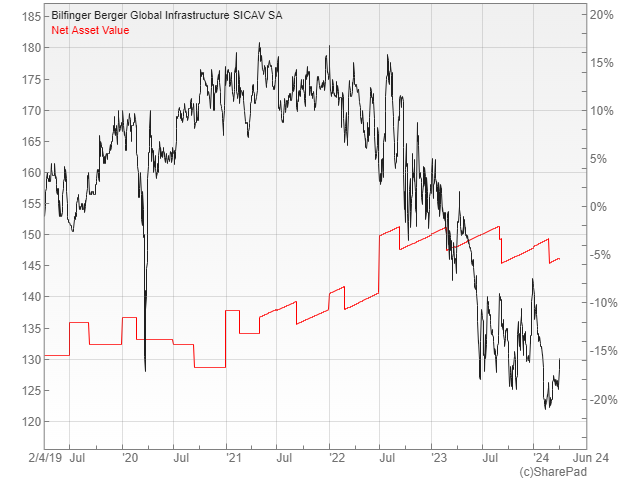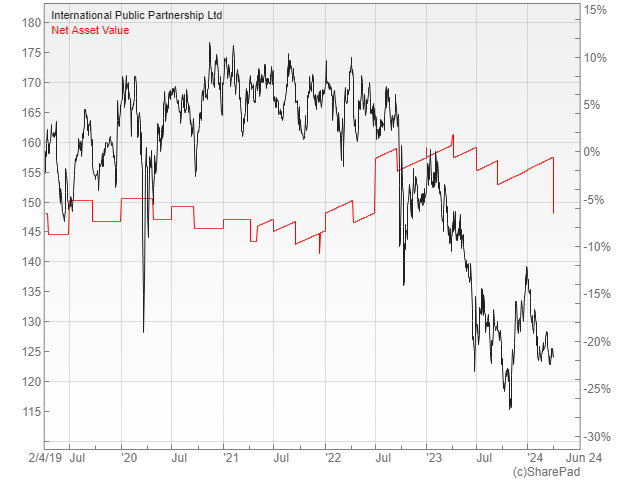Two Infrastructure Trusts With High And Rising Dividends

One area of the market that remains out of favour is the core infrastructure sector, with many of the constituent investment trusts trading at wide double digit discounts. If the recent earnings reports are anything to go by, then this could represent a good long-term buying opportunity for anyone looking for a reliable source of income.
Infrastructure trusts typically invest in multi-year projects that provide consistent streams of revenue. When properly managed, they can use this cash to maintain an attractive and progressive dividend policy.
If interest rates come down more than expected, then the high and rising distributions on offer from these trusts should look a lot more attractive. This is especially the case where the underlying assets are not that economically sensitive, as it reduces the risk of a recession having a detrimental impact on the underlying cash flows.
Consultants at Capital Economics have recently forecast that the Bank of England may have to cut interest rates to three per cent next year in response to falling inflation. In such a scenario, yields of 6.5% from the infrastructure sector would attract a lot of bids.
Safe Option?
The one billion pound BBGI Global Infrastructure trust (LON: BBGI) has a fully operational portfolio with around a third of the assets located in Canada, another third in the UK and the rest divided between the US, Europe and Australia. It is well-diversified with a large allocation to lower-risk availability-style road and bridge investments.
In the accounts for the year to the end of December it reported a modest NAV decline of 1.4%, but is well capitalised with net cash on the balance sheet. The Board is considering using these funds to make new investments and has not committed to a share buyback policy despite the persistent discount.
BBGI is targeting dividends of 8.4p in 2024, which represents a six percent increase on last year, as well as 8.57p in 2025, with both expected to be fully covered by earnings. With the shares trading at 130p, this gives them a prospective yield for the current reporting period of 6.5%.
Assuming a scenario where no additional investments are made, the projected cash flows from the existing portfolio would be enough to maintain the progressive dividend policy for at least 15 years. It is pretty obvious that this a high quality business that is extremely well funded, hence the reason the 11% discount is tighter than that of its peers.

Attractive Alternative
The £2.9bn International Public Partnerships (LON: INPP) owns a diversified portfolio of 144 essential infrastructure assets, with just over 70% located in the UK and 86% of them fully operational. Almost half are regulated, where the income is set by an independent regulator, while most of the rest are public private partnerships, which are social facilities like schools or hospitals that are run by a private sector company.
In the accounts for the year to the end of December it reported an NAV decline of 4.1%, although it was still able to pay down the debt on its balance sheet. Where the two trusts differ is that INPP has made £30m available for share buybacks, with £5m having already been spent.
The Board has increased the annual dividend by three percent to 8.37p, giving the shares a prospective yield for the year of 6.8%. It is planning to grow the distributions by at least 2.5% per annum and thinks that this is achievable out of the net operating cash flow, with the existing assets able to maintain the progressive dividend policy for the next 20 years.
Numis believe that the current discount of 16% remains too wide for the risk adjusted return potential of the portfolio. They think the current share price undervalues the earnings visibility, quality and diversity of revenue streams, especially as the trust has one of the highest positive inflation correlations in the sector. .

Comments (0)